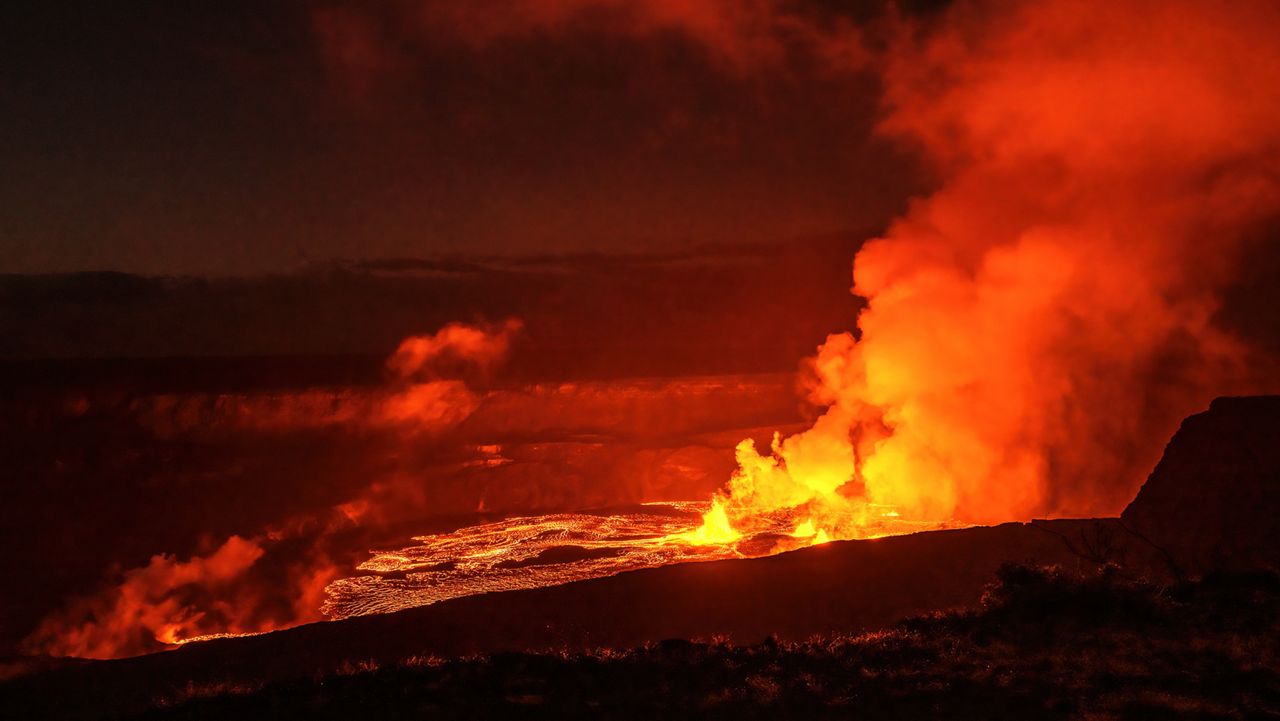As of Feb. 3, the Volcano Alert Level has been lowered from watch (orange) to advisory (yellow) since earthquake and ground "deformation rates" from Kilauea's summit along the Koae fault system have greatly decreased over the last 24 hours, according to the Hawaiian Volcano Observatory.
HVO officials say the magma into the area has slowed and lowered the likelihood of an eruption.
The Hawaiian Volcano Observatory said increased earthquake activity and inflationary ground deformation at Kilauea’s summit began Wednesday morning, which indicates movement of magma in the subsurface.
HVO raised the volcano alert from “advisory” (yellow) to “watch” (orange).
“Kilauea’s summit is pressurized; an eruption could occur with little warning,” HVO said in a news release.
All of the activity is confined to the summit area, which is within the Hawaii Volcanoes National Park, and if an eruption occurred, it would not threaten residential areas.
Since the morning of Jan. 27, HVO has recorded more than 1,400 earthquakes. The strongest earthquakes — with a maximum magnitude of 3.4 — have triggered rockfalls within Halemaumau crater.
In Oct. 2023, HVO reported elevated activity at Kilauea, including hundreds of earthquakes, but it did not lead to an eruption. HVO cautions it is not possible to say with certainty if the current volcanic activity will lead to an eruption.
Kilauea is arguably the world's most active volcano. According to the U.S. Geological Survey, the caldera saw nearly continuous activity during the 19th century and early part of the 20th century. Since 1952, Kilauea has erupted dozens of times. From 1983 to 2018, the volcano was active along the East Rift Zone. A lava lake formed in 2008 at Halemaumau Crater.
In 2018, the East Rift Zone activity ended and the lava lake drained. Since 2020, Kilauea has had several summit eruptions, at times creating a new lava lake in the collapsed area that formed in 2018. Last year, Kilauea erupted from January until March. Kilauea erupted again for several weeks in June, with fountains of lava reaching heights of 200 feet. In September, the eruption was confined to Halemaumau Crater and lasted for seven days.
Michelle Broder Van Dyke covers the Hawaiian Islands for Spectrum News Hawaii. Email her at michelle.brodervandyke@charter.com.
Editor's note: This article has been updated with the latest information from the Hawaiian Volcano Observatory, which was sent out Saturday at 8:24 a.m. (Feb. 3, 2024)





